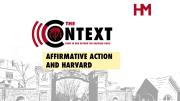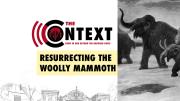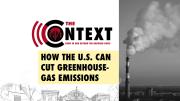This is the seventh post of "The Context"—a biweekly series of archival stories—offering our readers a useful background to some of the most important subjects in the news today. We hope you enjoy it.
“Can Affirmative Action Survive?” That’s the provocative headline of a recent New Yorker article by Nicholas Lemann ’76, which explains the long, complex history of affirmative action in university admissions and discusses its potential trajectory as the Supreme Court considers whether to hear the first such case involving a private university, Students for Fair Admissions v. Harvard. His analysis begins with a quick history lesson about the six times the Court has considered such issues:
The first time, the Justices wound up declaring the case moot. The second time, they voted 5–4 against an explicit, numerical version of affirmative action, and 5–4 in favor of a less explicit version. The third and fourth times involved two lawsuits against the University of Michigan, which the Court decided simultaneously. In one, it ruled against another explicit, numerical version of affirmative action by a 6–3 vote, and in the other it once again voted 5–4 in favor of a less explicit version. The fifth time was the University of Texas case; the Court sent it back to a lower court for reconsideration. That led to the sixth time, in 2016. It decided, by a one-vote margin, in favor of keeping a soft-edged kind of affirmative action that relies on the judgment of an admissions office to use race appropriately when considering an applicant. Is there any issue on which the Supreme Court has produced less clarity?
Lemann writes that it would be interesting if the Supreme Court decides to take the Harvard case because it involves “a clash between two opposing principles, both arguably invented at Harvard: meritocracy and diversity.” Harvard’s historical use of standardized intelligence tests, spurred by former President James Bryant Conant, helped promote this idea of meritocratic admissions, Lemann argues. And an amicus curiae brief from Harvard helped establish diversity as the predominant rationale for upholding affirmative-action policies.
Harvard Magazine has covered the University and affirmative action extensively. This 2012 article outlines much of Harvard’s history with affirmative action, both as a defendant and as a filer of briefs. The report was written after Harvard filed once such brief in the Fisher v. University of Texas at Austin case, which ultimately upheld that university’s race-conscious admissions policy. But the article also discusses the Regents of the University of California v. Bakke precedent, which “famously cited Harvard’s holistic admissions process” as a way to take race into account in admissions. It features several opinions in support of diversity and affirmative action written by past Harvard presidents, including Neil L. Rudenstine, Derek C. Bok, and Lawrence H. Summers.
Rudenstine in particular made diversity in education a key component of his tenure, as noted in this retrospective on his presidency. His President’s Report, 1993-1995, was a lengthy essay on how diversity bolsters education. And after the Fifth Circuit Court of Appeals ruled against affirmative action in Hopwood v. Texas, he wrote, “I respectfully and strongly disagree.” The retrospective continues:
Diversity among students, he said, makes possible “the kind of understanding that can come only when we are willing to test our ideas and arguments in the company of people with very different perspectives”—the “remarkable variety of men and women whom we might not otherwise have the opportunity to learn from or even to meet.”
Bok, too, was passionate about upholding race-conscious affirmative-action policies, even joining Princeton president emeritus William G. Bowen, LLD. ’73 in writing a book about the subject, The Shape of the River: Long-Term Consequences of Considering Race in College and University Admissions, reviewed in our pages by former general counsel of the Equal Employment Opportunity Commission Daniel Steiner ’54, LL.B. ’58, former general counsel of the University and, at the time of the review, president of the board of directors of Harvard Magazine Inc.
For a summary of the present affirmative-action case concerning Harvard, I’d recommend reading this news report on the circumstances of the case, as well as our coverage of the decision reached by federal court judge Allison Burroughs, which upheld the University’s admissions program. Sometime this fall, after further briefings, the Supreme Court will determine whether to hear the appeal of this decision—and if so, whether to uphold or upset the current guidelines governing the use of affirmative action in admissions. And even then, the future of affirmative action will likely a remain highly contested political issue.
More from “The Context”
- Life on the Mesopotamian Marshes—and the Specter of Drought: Past work on water and human intervention
- How Exercise Gives Us Purpose: Reviewing our best articles on exercise
- Arthur C. Brooks on "Revenge Bedtime Procrastiination": Presenting our best archival work on sleep
- Universities Pushed to Reckon with Slavery: Students and activists advocate for institutional change.
- Simpsons Writer John Swartzwelder on Comedy: Sharing some of our best work on comedians and their craft
- Daniel Lieberman on Food Addiction: Framing the news with our best articles on diet and health









